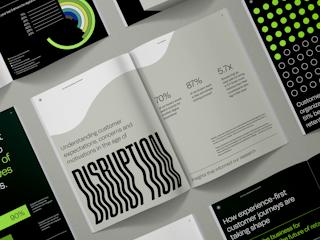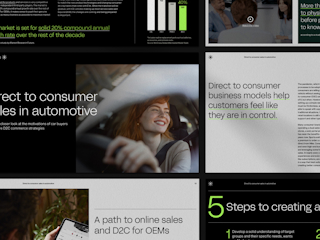Valtech Intrusiveness Index 2025: An assessment of a brand's reliance on intrusive engagement tactics, such as pop-ups, in their digital experiences
For example, Toyota, which ranked “High” in disruptiveness in two of the three markets, saw customer satisfaction scores that were up to 20% lower than expected benchmarks.
This indicates overuse and misalignment of engagement tactics like pop-ups can erode brand perception and frustrate users — highlighting the need for a smarter, experience-driven data model that prioritizes satisfaction, not just individual lead- and data-capture goals.
Real-time optimization across the automotive customer journey
At the core of performance-based commerce lies data — real-time, integrated and actionable.
OEMs must treat data as a strategic asset and leverage it rigorously to unlock personalization, optimize spend and elevate every phase of the customer journey.
In performance marketing, data is the fuel that powers every decision. OEMs must evolve from static, quarterly reporting to live, AI-powered decision-making using unified customer datasets.
Key areas of opportunity include:
Marketing efficiency
-
Attribute sales across all touchpoints, from paid social ads to configurator usage to showroom visits.
-
Shift from keyword-based SEO to AI-enhanced content that maps to customer intent.
-
Identify high-intent segments in website traffic and deliver personalized product offers, financing solutions and incentives.
Sales optimization
-
Use web analytics and social signals to detect friction points in the digital buying process.
-
Integrate CRM/DMS platforms to provide agents, retailers and customer service with a unified view.
-
Track lead form submissions and online configurator paths to personalize follow-ups.
-
Blend AI chatbots with human concierge agents to deliver seamless support from pre- to post-sales. Or, take the experience to another level with an AI concierge.
Retail performance (dealerships, agents, brand spaces)
-
Connect digital behaviors (test drive booking, part configuration) to foot traffic in physical locations and track further through to sales.
-
Provide retail partners with insights into individual customer journeys, allowing tailored offline experiences.
-
Optimize scheduling and staffing based on real-time online appointment data.
What you can learn about your customer experience from real-time analytics
An analysis of real-world OEM digital performance illustrates the opportunity for data-informed transformation.
Across key European markets (UK, DE, FR, ES, IT), our 2024 benchmarking study comparing website traffic and conversion rates year-over-year showed varying outcomes for brands like Audi, BMW and Toyota.
For instance, Audi's German site saw a 9.4% increase in web visits but an 18% drop in conversions, indicating inefficiencies in converting digital traffic to sales. Conversely, BMW’s Spanish site achieved a 32% YoY sales boost despite only modest web traffic gains — highlighting effective on-site funnel optimization.
These disparities reveal how important real-time analytics are in connecting marketing spend with actual commerce outcomes at the retail level across the broader automotive customer journey.
Brands that continuously monitor and adjust their digital experience — not just based on campaign reach or individual efforts’ KPIs but on conversion and visit-to-sale efficiency end-to-end — are poised to outperform.










